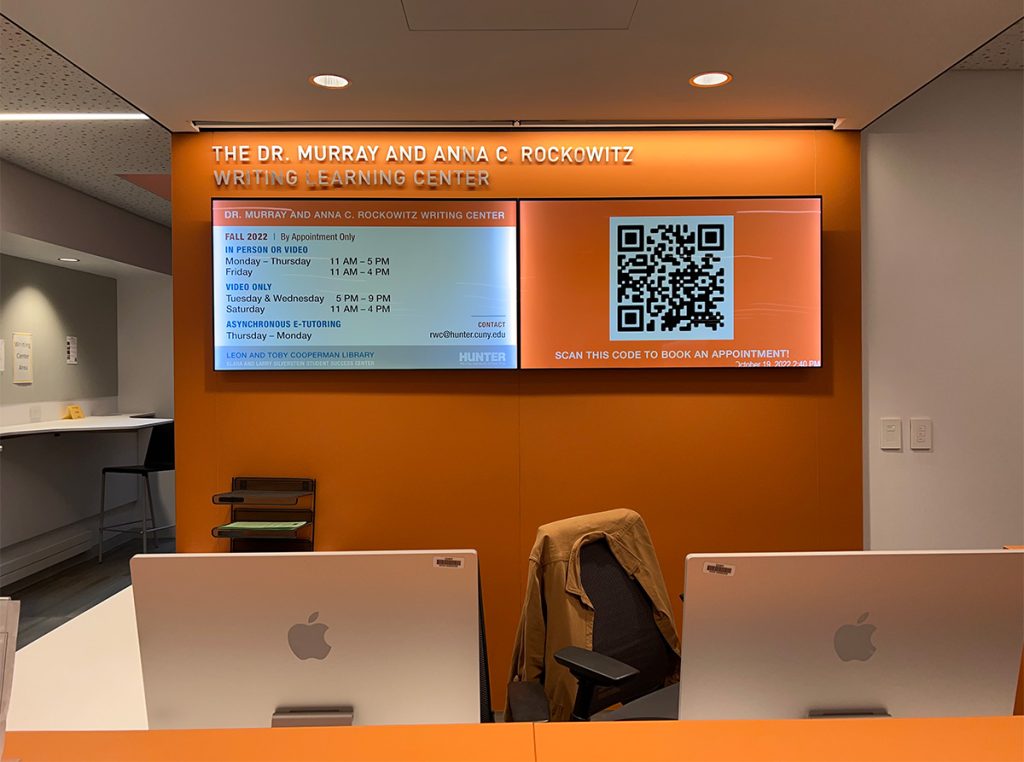Kenigsberg tells Jude Rollionson why he believes the RWC can offer Hunter students more than the Kaplan tutorial plan.
Jack Kengisberg: So I think that’s very different than you going to a Kaplan course or something. They’re teaching you strategies for beating the test. They want everyone to use the exact same strategies and be the exact same. Writing’s a really personal act. The goal is not to leech your voice away from you until you just give your professors the correct. There is no correct. There’s your answer that is developed in the way that you think makes the most sense.
And we can just push you and prod you and cajole you and draw you into working that out in more complex finished ways. But at the end of the day, it’ll be your thoughts, your writing, your paper, however you want to present it.
Jude Rollinson: And do you find that there’s mostly just writing majors and English majors, journalism majors? Or do you think that the varieties, they’re your science majors? Do you find that there’s a vast variety or is it just mostly people just focusing on writing?
Kenigsberg: Probably the greatest number, or the class that has the greatest representation in fall semesters is always English 120. And the class that has the greatest representation in spring semesters, is always English 220. That’s the freshman sequence.
They’re pretty much every student who’s coming into the college in the fall is taking that class and then they move on to the next class in the sequence. So it’s not surprising that that’s where you’re getting literally thousands of people taking those classes at the same time.
But we are a general writing center and we support literally every class in the college, as long as there’s writing. But no, scratch that, as long as there’s reading. And so even the classes where there aren’t writing assignments, there’s usually reading assignments. And we support that too.
Yeah. No, I mean just last week there was a student from a bio capstone coming in. The tutor was very flummoxed because she did not understand that paper. But she could help him with the expression. He explained to her what on earth the science was, and she helped him express it in a way that was clearer or developed.
So we get students from really all over college, undergraduate and grad. We get quite a number of grad students coming in from a wide variety programs. So I think most semesters we get people from about 15 to 20 grad programs and about 35 to 40 undergrad programs coming down.
Rollinson: Cool. Thank you.
Jude Rollison can be reached at JUDE.ROLLISON96@myhunter.cuny.edu
